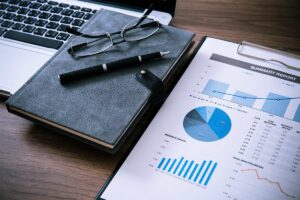
For accounting purposes, companies can use any of these methods, provided they align with the underlying usage of the assets. For tax purposes, only prescribed methods by the regional tax authority is allowed. Using the steps outlined above, let’s walk through an example of how to build a table that calculates the full depreciation schedule over the life of the asset. The Double Declining Balance rate https://www.hftienda.com/2023/11/14/prepaid-insurance-definition-journal-entries-is-it-3/ is derived by multiplying this straight-line rate by two.
Next, double the SLD rate to get the DDB rate, which in this case would be 40%. In fact, as the name suggests, the DDB method results in a first-year depreciation expense of double the amount that could be expensed using the straight-line method. And the book value at the end of the second year would be $3,600 ($6,000 – $2,400).
Unlike straight-line depreciation, DDB doubles the rate, providing bigger deductions upfront and reflecting actual usage patterns more realistically. For example, a $100,000 asset with a 40% DDB rate has $40,000 first-year depreciation ($100,000 x 40%). In subsequent years, apply the DDB rate to the asset’s beginning book value (cost minus accumulated depreciation). For instance, after $40,000 depreciation, the $100,000 asset’s book value becomes $60,000; the second year’s depreciation is $24,000 ($60,000 x 40%). The DDB depreciation rate is double the straight-line rate, calculated by dividing one by the asset’s useful life. For example, a five-year useful life yields a 20% straight-line rate (1/5), resulting in a 40% DDB rate.
This gives you the annual depreciation rate if you were using the straight-line method. With DDB, you depreciate the asset at double the annual rate you would with the straight-line method. Instead of spreading the cost evenly over its life, you front-load the expenses. This reflects that some assets are most useful, and therefore lose value more rapidly, in their initial years. Each year, when you record depreciation expenses, it lowers your business’s reported income, potentially reducing your taxes. Make sure to check with a tax professional to get this right and make the most of possible tax benefits.

ABC Limited purchased a Machine costing $12500 with a useful life of 5 years. The Machine is expected to have a salvage value of $2500 at the end of its useful life. Yes, DDB is permitted under both IFRS, Saudi GAAP, as long as it reflects the pattern in which the asset’s future economic benefits are expected to be consumed. Modern accounting tools like Wafeq make it easier than ever to implement DDB with precision and confidence. By automating calculations, ensuring compliance, and integrating with existing systems, Wafeq empowers finance teams to focus more on analysis and less on manual tracking.
Picture a seesaw; as one end drops down quickly, it symbolizes how DDB allocates a higher depreciation expense in the early years of an asset’s life compared to straight-line. This method is particularly useful for assets that lose value rapidly during their initial usage. In addition to straight line depreciation, there are also other methods of calculating depreciation of an asset. Different methods of asset depreciation are used to more accurately reflect the depreciation and current value of an asset. A company may elect to use one depreciation method over another in order to gain tax or cash flow advantages.
For instance, if an asset’s straight-line rate is 10%, the DDB rate would be 20%. This accelerated rate reflects the asset’s more rapid loss of value in the early years. The straight-line depreciation method simply subtracts the salvage value from the cost of the asset and this is then divided by the useful life of the asset. The annual straight-line depreciation expense would be $2,000 ($15,000 minus $5,000 divided by five) if a company shells out $15,000 for a truck with a $5,000 salvage value and a useful life of five years. The declining how to calculate depreciation rate for double declining balance balance method contrasts with straight-line depreciation, which suits assets that lose value steadily.

The Units of Output Method links depreciation to the actual usage of the asset. It is particularly suitable for assets whose usage varies significantly from year to year. This approach ensures that depreciation expense is directly tied to an asset’s production or usage levels. With tools like a depreciation calculator and a clear understanding of the methods, anyone can manage this aspect of accounting effectively. Whether you’re a student or a business owner, this knowledge can help you make smarter financial decisions.

DDB might be right for your business if you have assets that become outdated quickly or will see most of their use in the initial years. It’s a strategic choice to match expenses with the asset’s productive period. This method is another form of accelerated depreciation but less aggressive than DDB. It’s based on a formula that depreciates more in the early years and less as time goes on, though not as steeply as DDB does. There are scenarios where adjustments may be needed in DDB calculations. For instance, if an asset’s market value declines faster than anticipated, a more aggressive depreciation rate might be justified.
The DDB method is particularly relevant in industries where assets depreciate rapidly, such as technology or automotive sectors. For example, companies may use DDB for their fleet of vehicles or for high-tech manufacturing fixed assets equipment, reflecting the rapid loss of value in these assets. If the double-declining depreciation rate is 40%, the straight-line rate of depreciation shall be its half, i.e., 20%. Double-declining depreciation charges lesser depreciation in the later years of an asset’s life.